The modern, oceangoing cruise ship has reached massive heights (and length and width and passenger capacity). But luckily for cruisers, there is no one-size-fits-all cruise ship. Today’s cruise options span intimate expedition ships of a few dozen other passengers to behemoth floating resorts with neighborhoods that can accommodate thousands. And that’s not considering the many cruise ships that ply the world’s lakes and rivers.
Still, for those who have watched cruising evolve over the years, it is fascinating to compare the sheer size of these feats of engineering. For anyone who loves a good statistic, cruise ships have them in spades. We’ve compiled a brief history of ship size as well as the scope of engine rooms, anchors, and more for readers to marvel over.
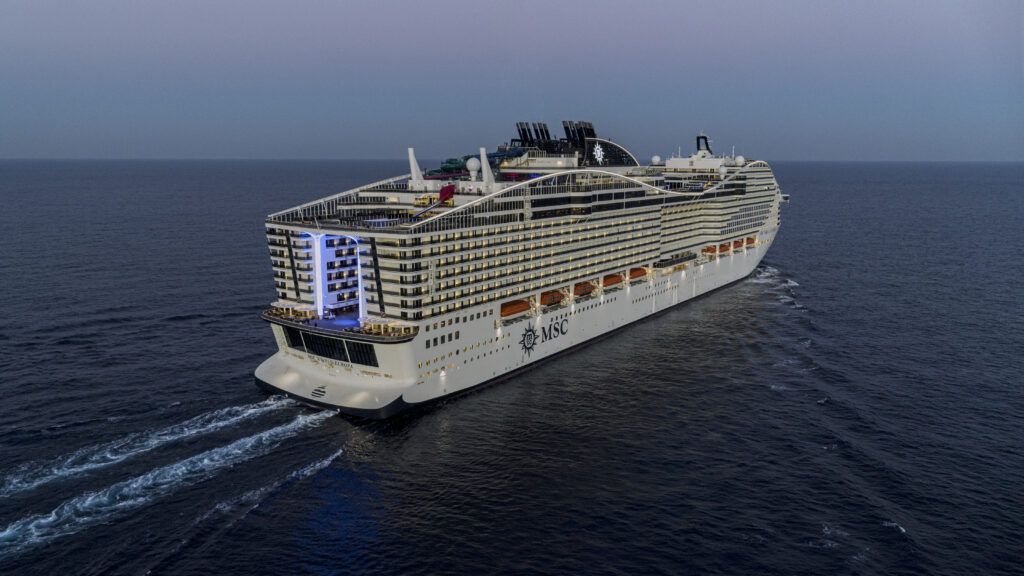
Size isn’t everything, but when it comes to cruise ships, it can certainly be impressive. Here’s a look at how big cruise ships are, on every scale imaginable.
Call to Book Your Next Cruise Now: 1-855-228-5584!
How big is a modern cruise ship?
In order to gain some perspective on how big modern cruise ships are, it’s helpful to take a look at the evolution of ship size over the years. The most common comparison used is perhaps the world’s most famous ocean liner, the Titanic.
The Titanic sailed in 1912, well over a century ago. At the time, it was 10 decks high (seven passenger decks), 882.5 feet long, with a 92-foot beam (the widest part of the vessel). It could accommodate 2,408 passengers across first, second, and third-class cabins.
Fast forward to another famous ship, the Love Boat. Princess Cruises’ Pacific Princess sailed onto our TV screens in the 1970s as the “Love Boat.” This vessel was only 553.5 feet long with an 80.7-foot beam, accommodating just over 600 passengers.
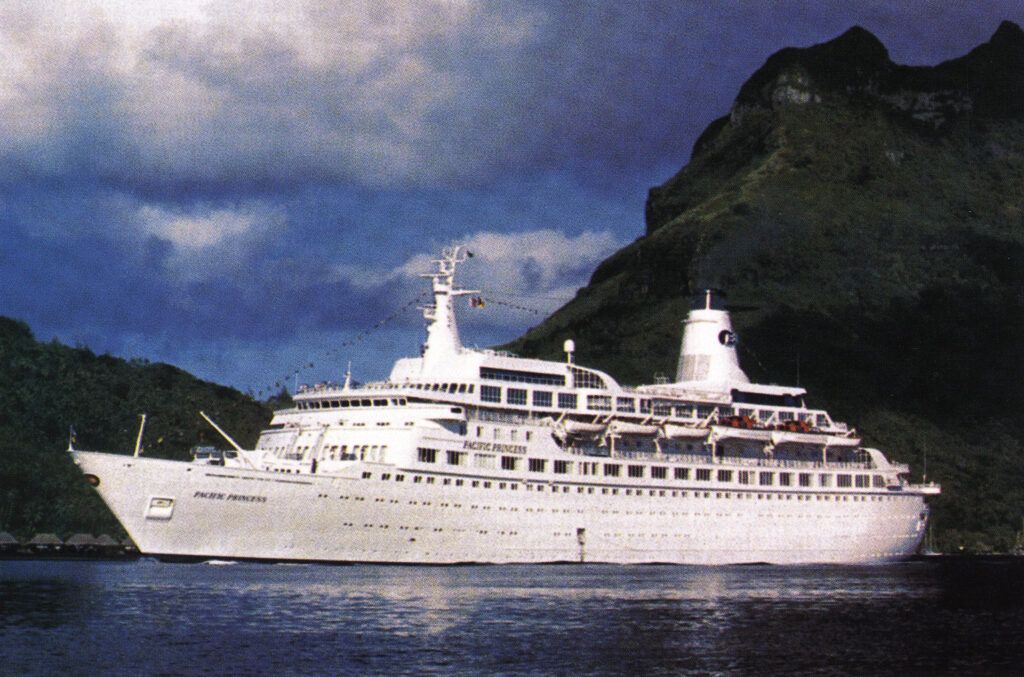
Enter the mega-ships
It was really in the late 1980s to 1990s that cruise ships began to grow to the mega-ships we are familiar with today. In 1988, Royal Caribbean — now widely recognized as sailing the world’s largest ships — built what’s considered to be the first modern mega-ship, Sovereign of the Seas. Accommodating more than 2,600 passengers across 11 passenger decks, Sovereign measured 880 feet long and 106 feet at the beam.
Two decades later, in 2009, Royal Caribbean launched Oasis of the Seas. This revolutionized the cruise industry with our present-day interpretation of a mega ship. The Oasis Class boasts 18 total decks, lengths up to 1,188 feet and up to 6,988 passengers — that’s 10 times the passenger capacity of the Love Boat.
So, well into the 2020s, how big is a modern cruise ship? Is a cruise ship bigger than an aircraft carrier? Well, yes actually. The largest aircraft carrier at sea has a length of 1,106 feet. Royal Caribbean’s Icon of the Seas, launching in 2024, is 1,198 feet long. Also, due to its height and capacity, this cruise ship is more than double the weight of the aircraft carrier.
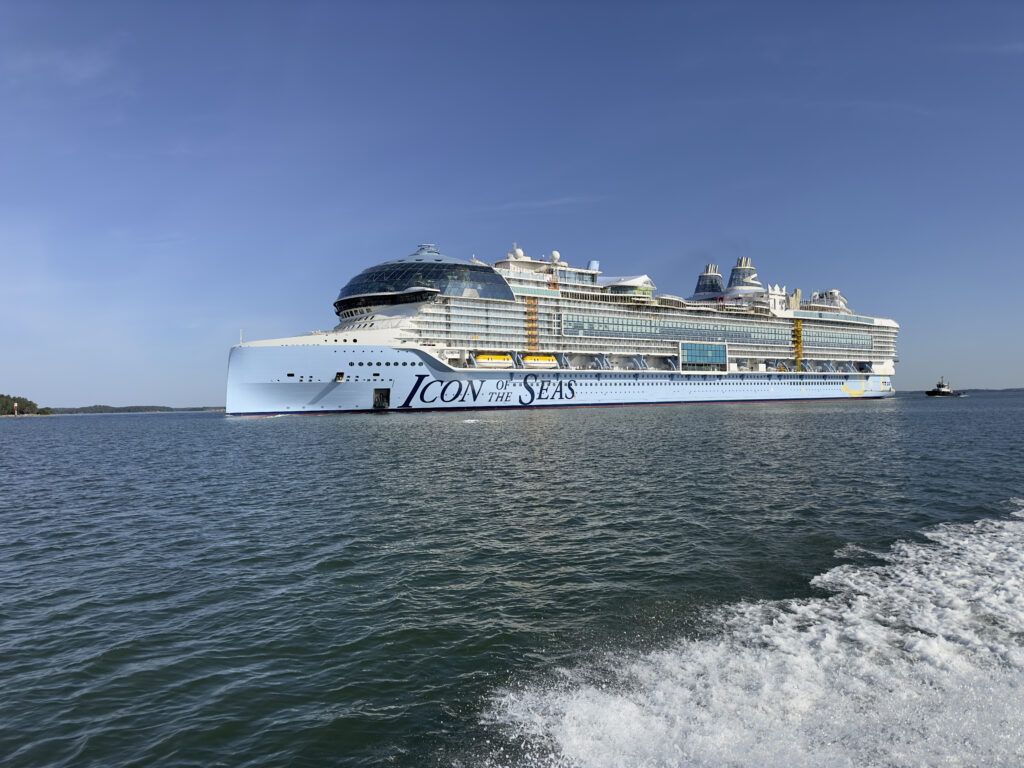
Beyond the biggest ships
The growth of cruise ships doesn’t mean that all passenger ships require you to sail with thousands of others and navigate nearly two-dozen decks. In fact, even the majority of large ships sailing the Caribbean carry about 3,000 to 4,000 passengers (half of the biggest ships) and consist of a dozen to a dozen-and-a-half decks.
Prefer to avoid the crowds? Premium cruise lines like Azamara, Oceania Cruises and Windstar all sail with a maximum of a few hundred guests. Windstar offers just five decks.
How many tons is a cruise ship?
Ships are weighed using a measurement called gross registered tons (GRT). Gross register tonnage considers the internal volume of the vessel, with 1 GRT equaling 100 cubic feet.
With that measurement in mind, the average large cruise ship today weighs about 200,000 GRT. For perspective the Titanic weighed 58,000 GRT. The 50 biggest cruise ships currently sailing all weigh well over 100,000 GRT.
The heaviest cruise ship built to date — Royal Caribbean’s Icon of the Seas — currently weighs in at 250, 800 GRT. If you can imagine, that is the size of more than four Titanics.
EXCLUSIVE SAVINGS: Get Deals on Your Next Cruise Now!
How long is the average cruise ship?
Using the football field analogy, a modern cruise ship is about three football fields long. On average, that is about 1,000 feet. If you’re wondering how long the biggest cruise ship is, that would be Royal Caribbean’s Icon of the Seas (at the time of publication) measuring an estimated 1,200 feet in length.
How wide is a cruise ship?
An average oceangoing cruise ship is about 200 feet wide; wider than a football field (160 feet).
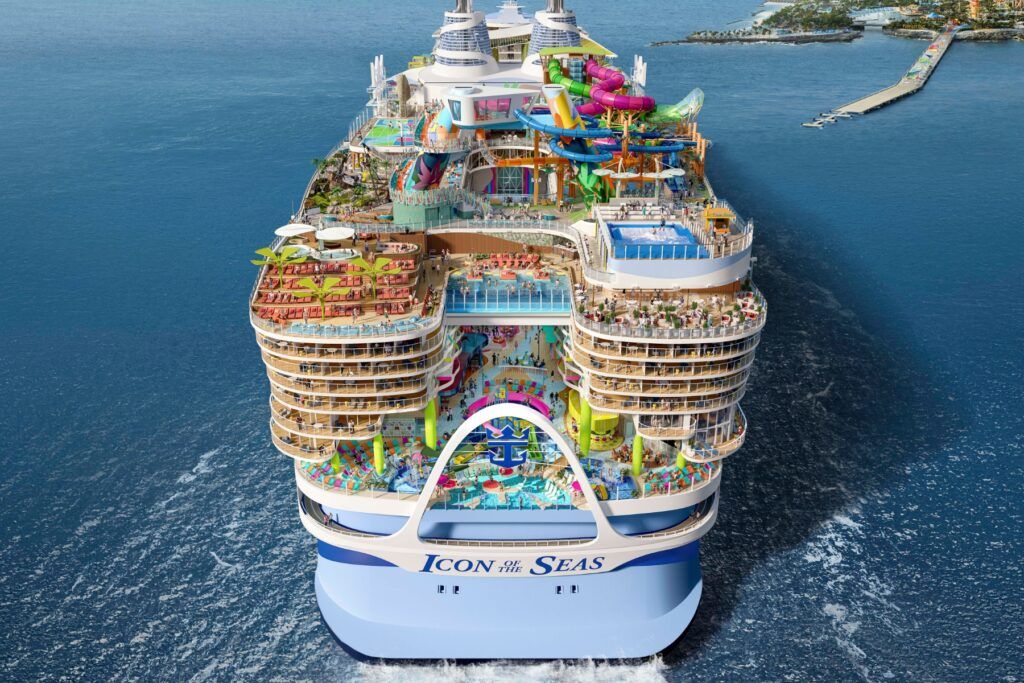
How many stories is a cruise ship?
Cruise ships are measured in decks, not stories. With that said, cruise ships are now so tall they might seem like floating skyscrapers. Mega cruise ships have at least a dozen decks, averaging between 12 and 16 decks (or stories). However, the world’s largest cruise ships are now reaching heights of 20 decks.
A Royal Caribbean Oasis-class cruise ship has 18 total decks (16 accessible to passengers). Above the water line, this equates to about 236 feet tall. At 20 decks, Royal Caribbean’s Icon of the Seas (total height) rivals that of the Statue of Liberty at 305 feet tall.
How deep is a cruise ship underwater?
Below the water line, there is about 30 more feet of a cruise ship sitting underwater. Such a massive vessel needs this difference or displacement to float and balance. While clever design and buoyancy keep most of the ship above water, there are about two decks that sit below the water line.
For the most part, these decks are accessible to ship crew only, and house the majority of crew rooms and their rest areas. But “below deck,” is also where restricted areas such as the morgue and holding cells are located. If you happen to die or behave badly while onboard a cruise, you might find yourself in the bowels of the ship on these lowest decks.
How big is a cruise ship engine?
Cruise ship engine rooms are located on the lowest decks of the ship for stability and security. These rooms can span multiple decks and contain not only the engines (yes, there are multiple!) but generators, fuel tanks, water systems and more.
There are typically between four and six engines on any given cruise ship, and they measure up to 45 feet long, 27 feet high, and can weigh about 275 tons. Multiply that times four and you’re looking at more than 1,000 tons of engines alone.
Engine rooms are tucked away for another reason: noise. While these rooms are insulated to protect against disturbing passengers, inside volumes can surpass 173 decibels — a level that would instantly damage the hearing of the crew without the proper protection.
No longer employing the steam engines of the 19th century, modern cruise ships are powered by diesel engines or diesel-electric hybrid engines. Since 2016, some cruise ship engines are now powered by liquid natural gas (LNG).

How big is a cruise ship anchor?
Even though dynamic positioning systems have revolutionized how cruise ships can maneuver and stop, cruise ships today still employ the iconic anchor. And yes, they are huge.
Most anchors measure between 10 and 20 feet long and 15 to 20 feet wide. In order to help stabilize the ship while docked, anchors typically weigh between 10 and 20 tons. Most cruise ships today actually have two anchors — one on each side of the vessel.
The anchor chain is another impressively long and heavy element of the anchor and you’re likely to hear it being deployed if you’re anywhere on a lower deck close to where the anchors are stored. Most anchor chains measure 1,000 links long. Each link weighs about 110 lbs., which means the chain itself weighs an estimated 55 U.S. tons.
How long does a cruise ship last?
Cruise ships are built to last. They undergo routine maintenance and refurbishments to keep them looking fresh and operating smoothly. Some cruise ships even live multiple lives if they are sold to another cruise line and renamed or redesigned.
Still, even the most resilient cruise ships eventually retire. On average, cruise ships operate on the high seas for about 20 to 30 years. Of course, there are exceptions to this number and some ships go on to sail for much longer.
After 75 years, the world’s oldest cruise ship — Astoria — was scrapped in 2023. It entered service in 1948 as Swedish American Line’s Stockholm and ended with the bankruptcy of Cruise and Maritime Voyages in 2021.
Even after a cruise ship is retired, it can go on operating like that of Queen Mary, which currently serves as a dry-docked hotel in Long Beach, California. However, most ships eventually make it to the scrapyard when all is said and done, where parts are sold, recycled or dismantled and melted down into new steel.
BOOK NOW: Get Exclusive Rates on Your Next Cruise!
Comments
Do you ever wonder how big is a cruise ship? Do you enjoy sailing on the largest cruise ships in the world? Drop us an anchor below to share your perfect-sized ship and amenities.

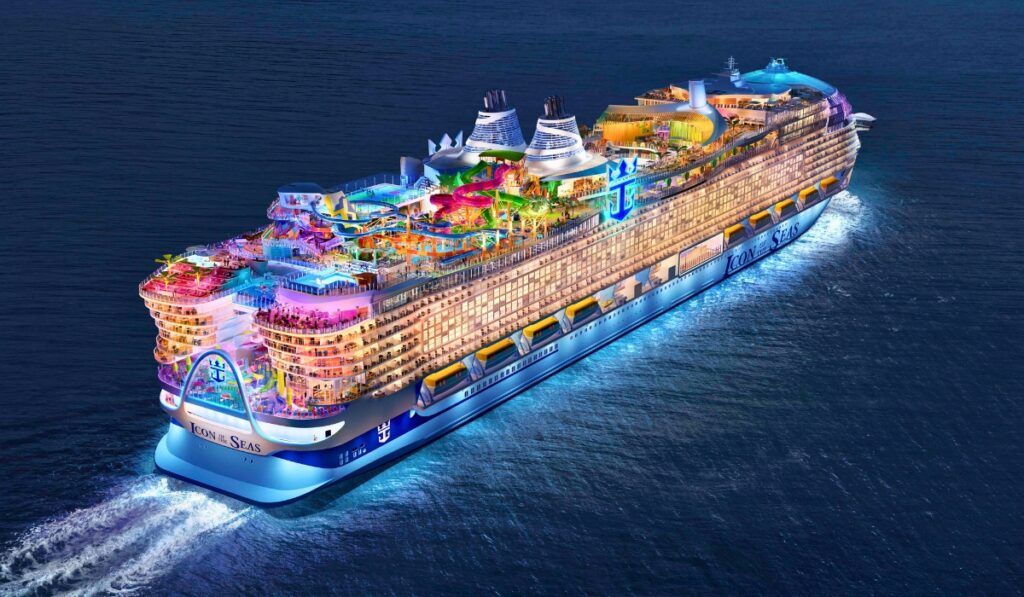
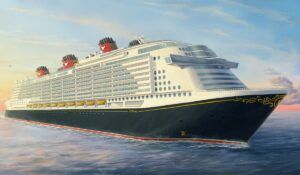

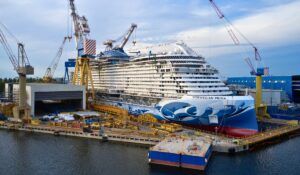
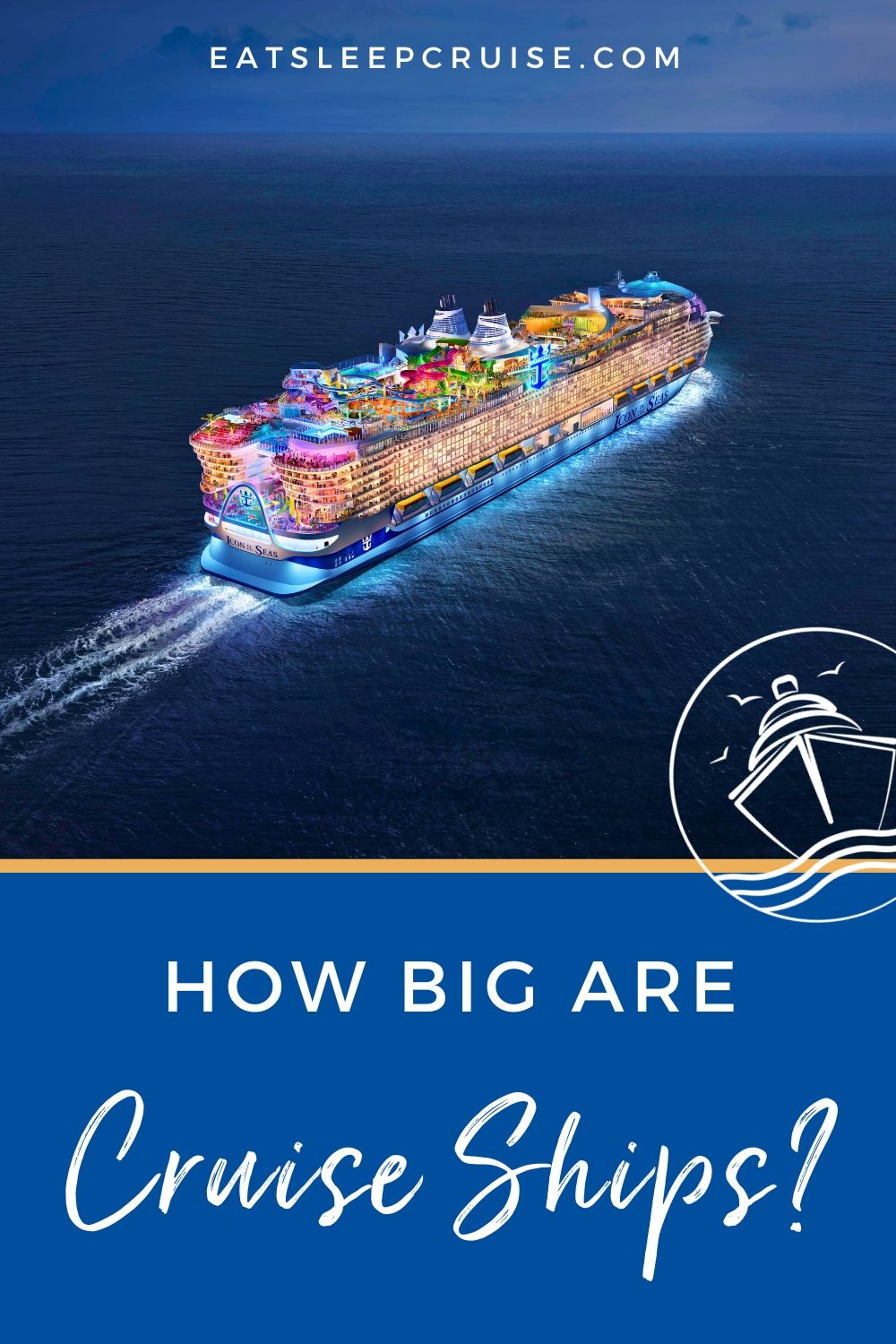
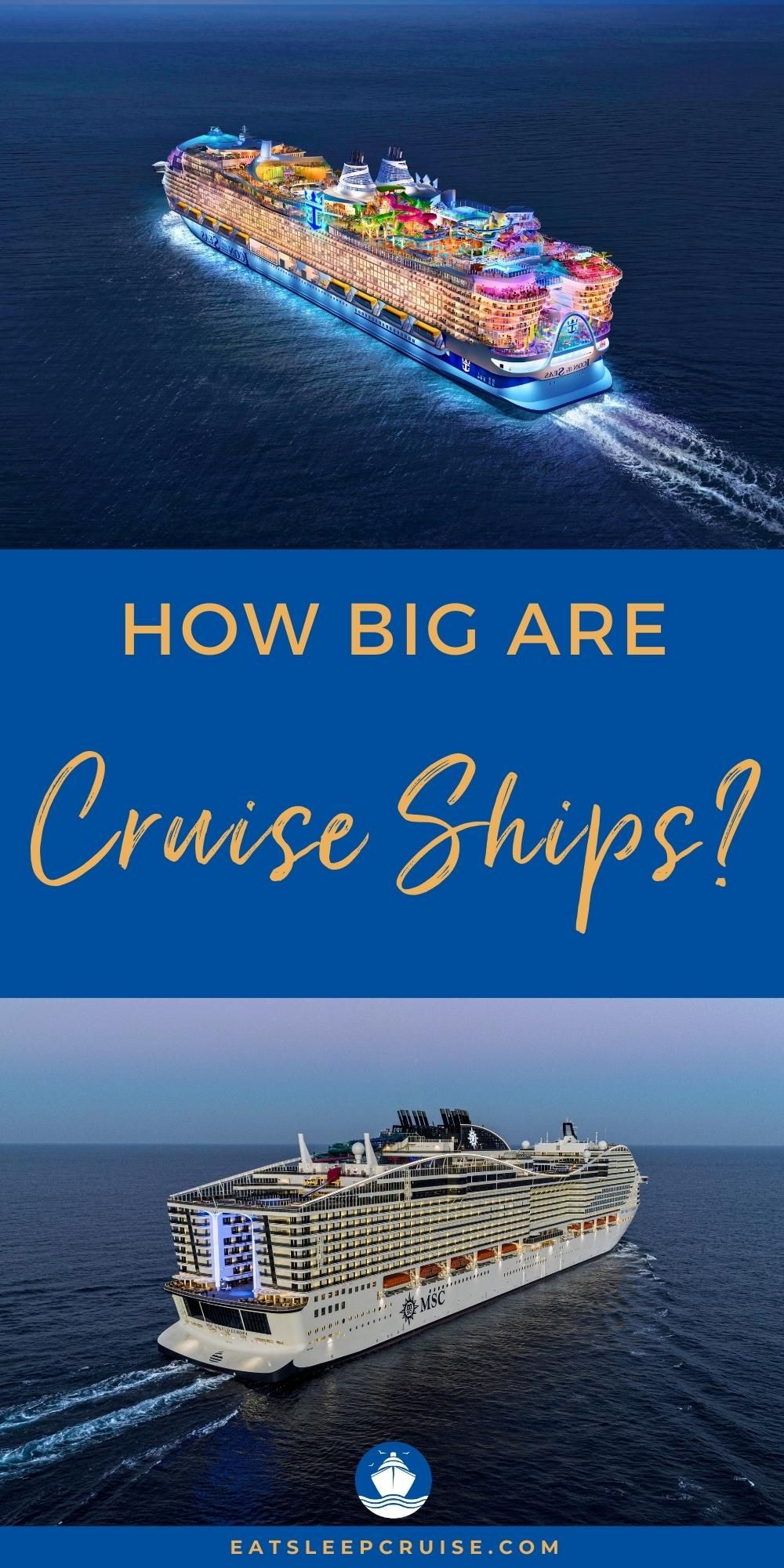



1 comment on How Big is a Cruise Ship?